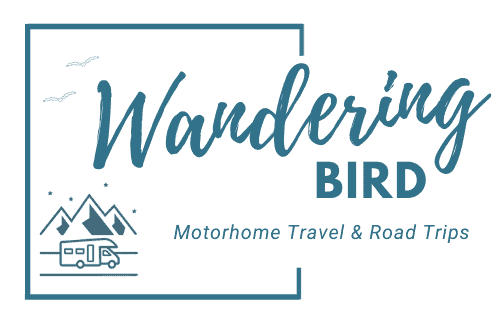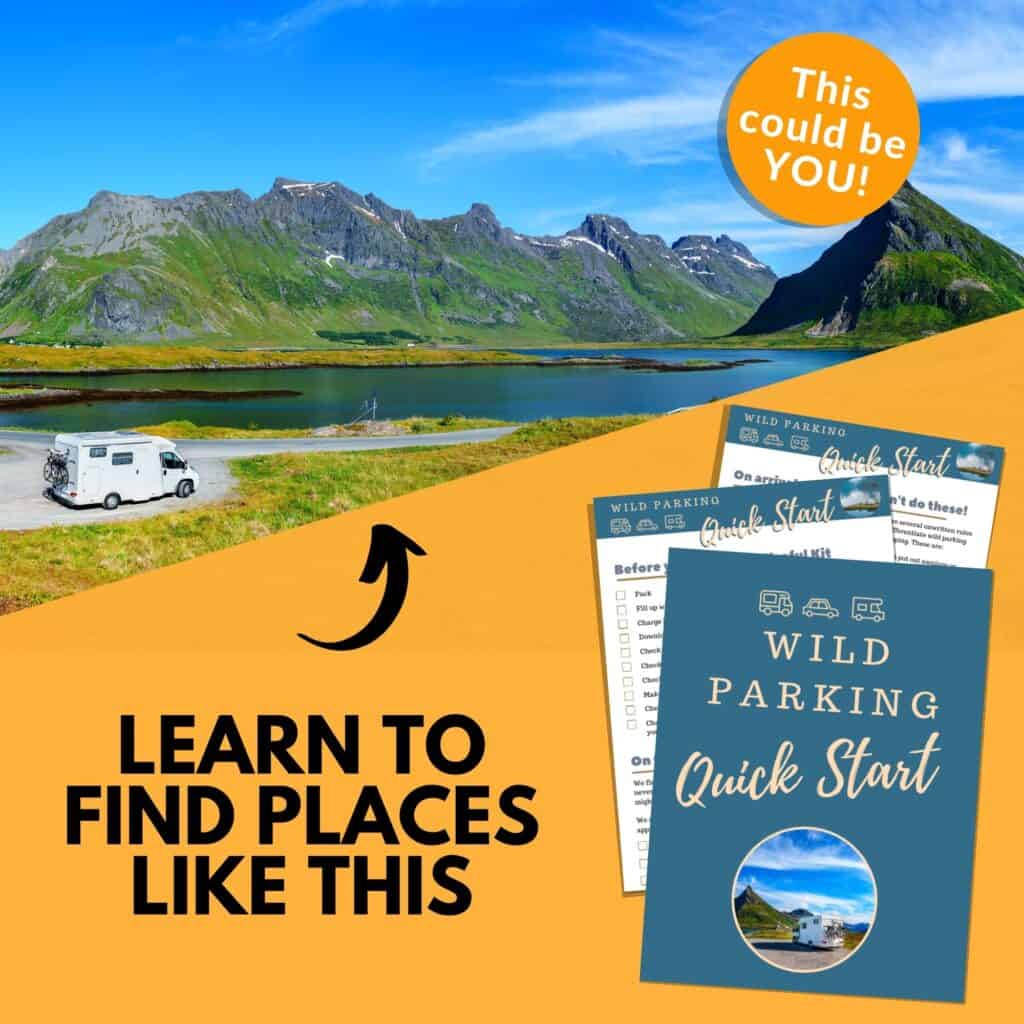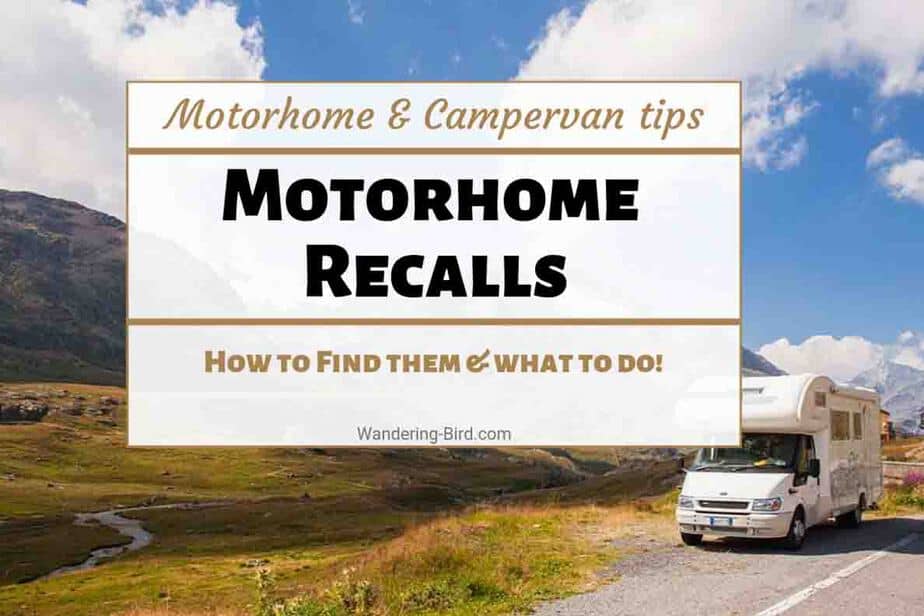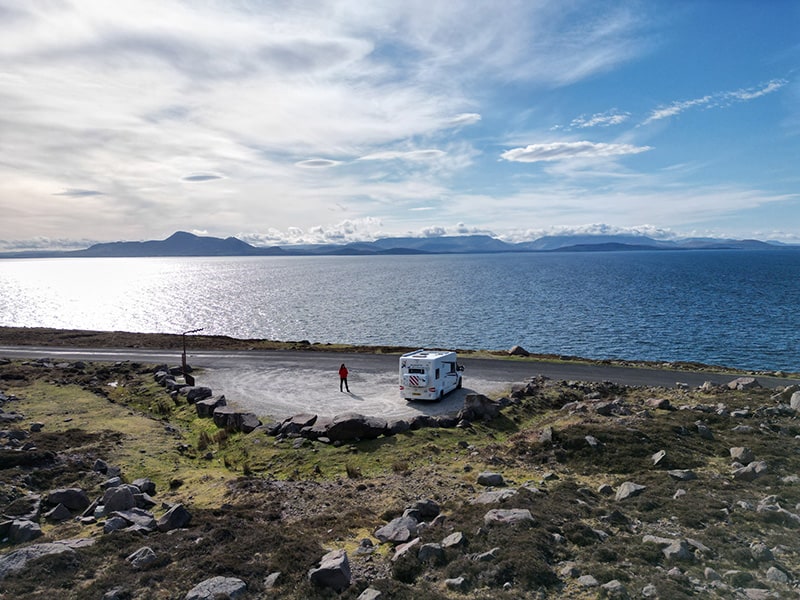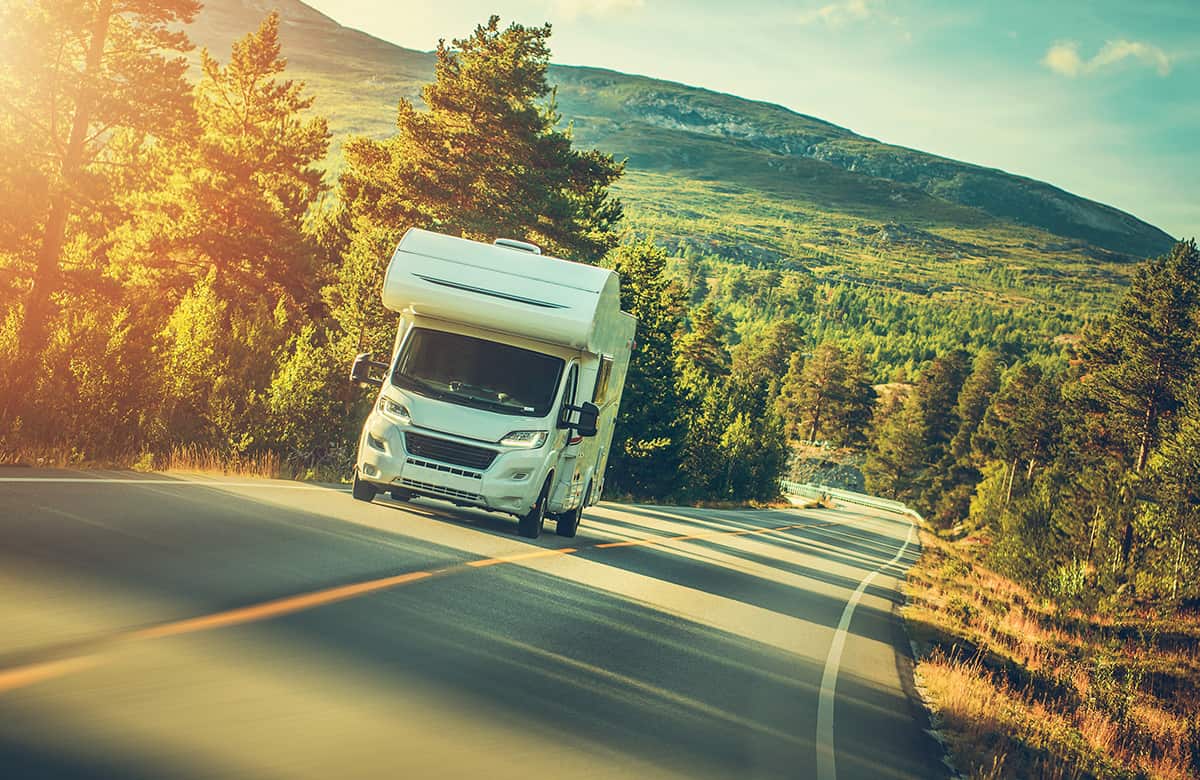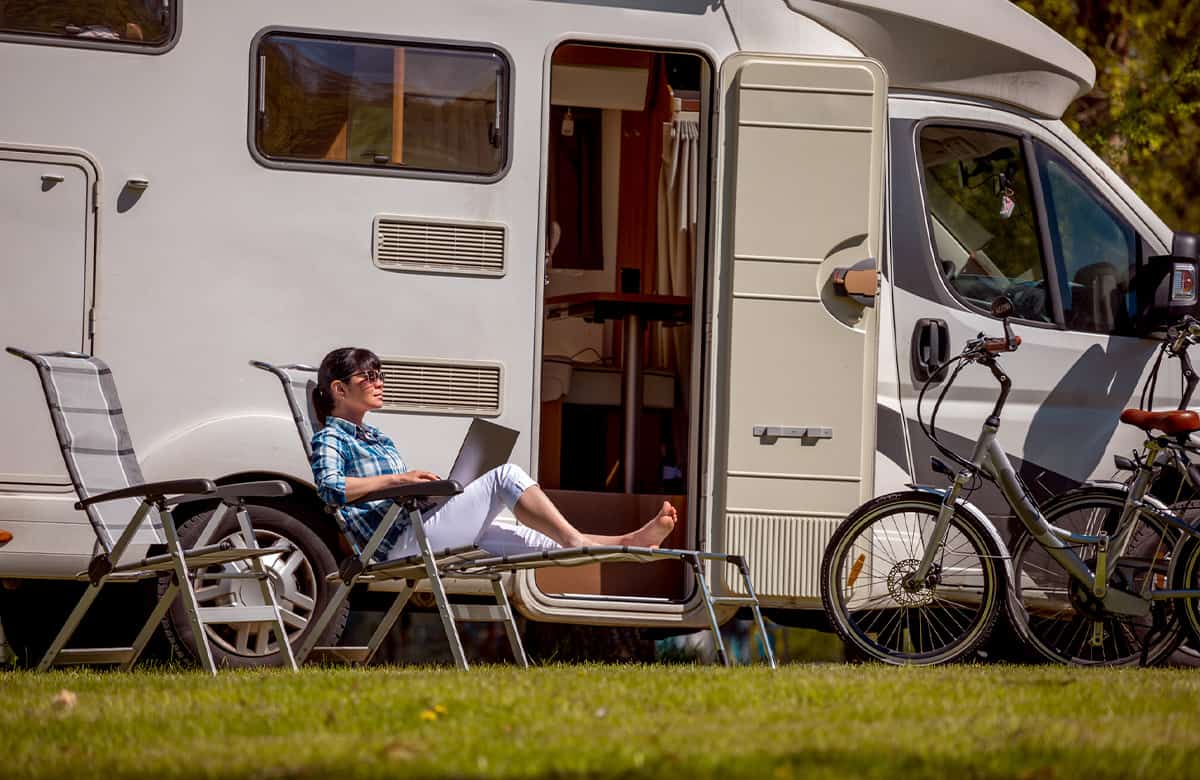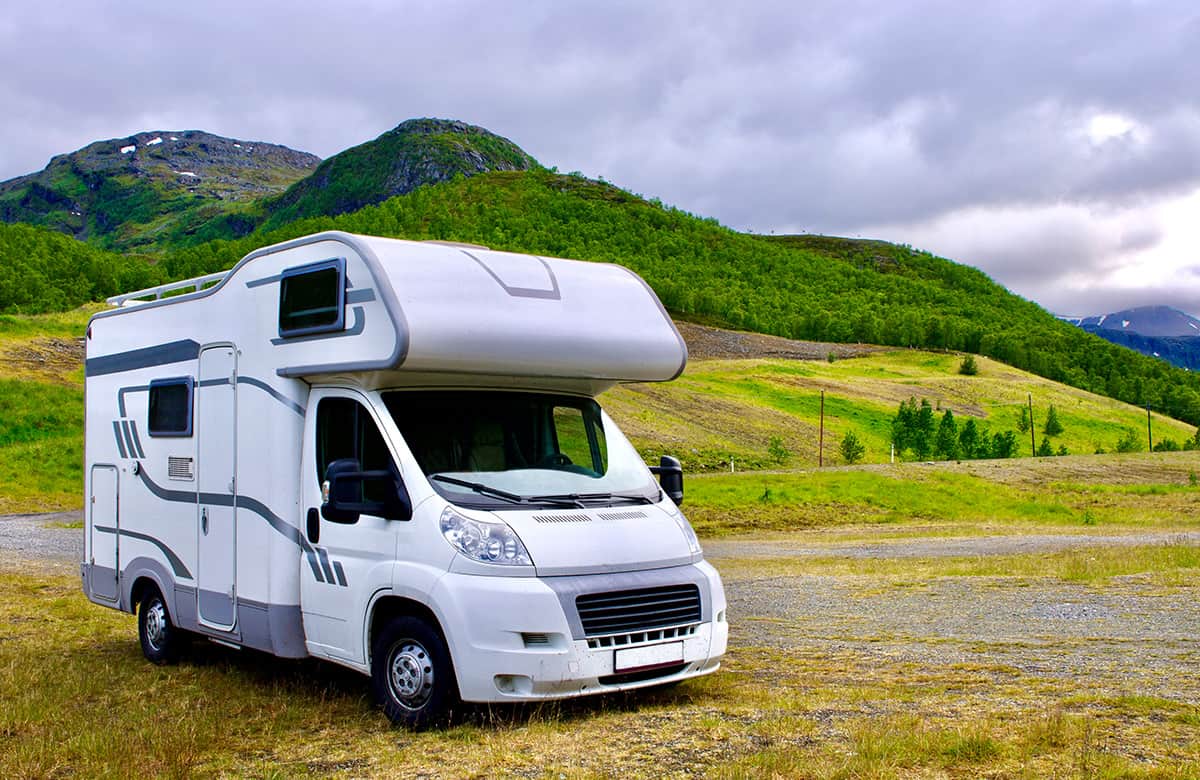27 Essential Motorhome Tips & Tricks for Beginners
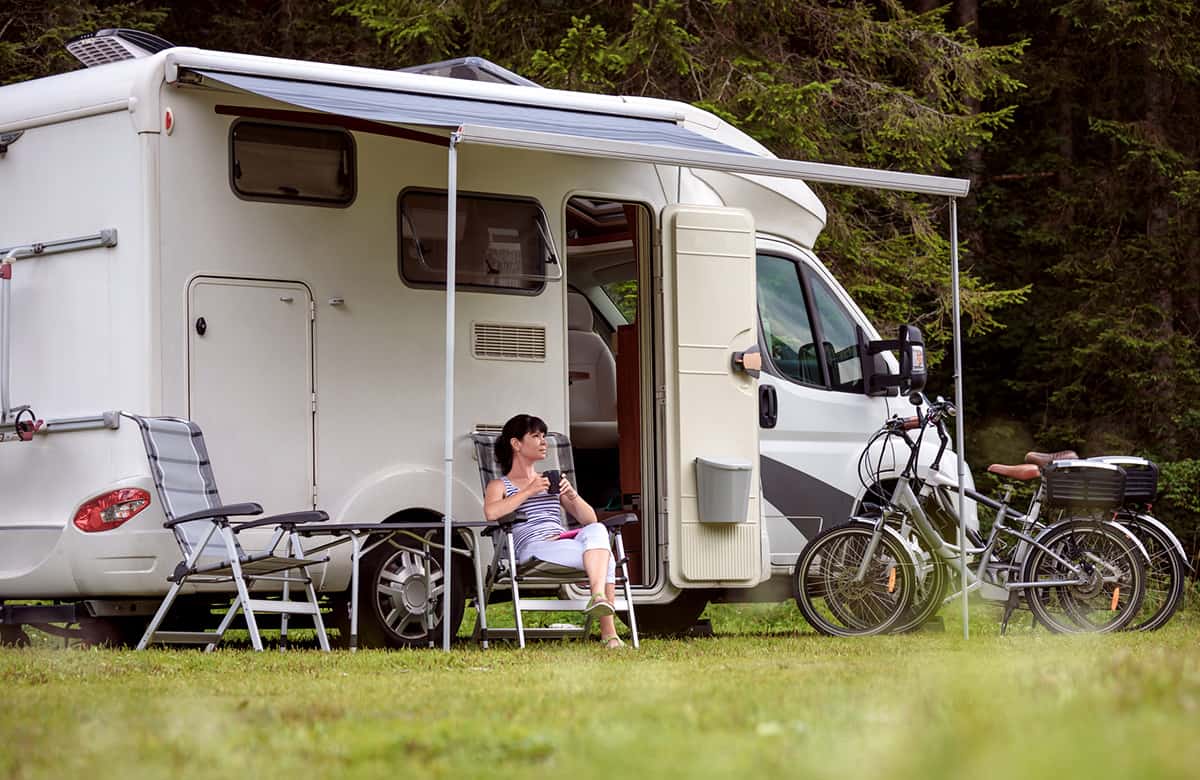
New to motorhoming? Trying to figure out how it all works? Don’t worry- we were all motorhome newbies at one time. Here are some of the best motorhome tips and tricks for beginners (or any motorhome or campervan owner needing a quick refresher after a long break!)
Don’t forget to grab your FREE motorhome departure/ pre-trip checklist below
*We work hard to make this the best motorhome travel blog and road trip website possible, full of helpful content for you. The website is supported by our readers, so if you buy through links on this site we may earn a commission- at no extra cost to you. All opinions remain our own.
If you find this post useful, you can also treat us to a coffee – we promise to enjoy it while creating more useful content like this- we might even indulge in a biscuit (or two!)
JUMP AHEAD TO...
Best Motorhome Tips & Tricks for Beginners
Sometimes, when you’re new to something, it can feel like everyone else is in on some secret and you didn’t get the memo. And motorhoming is even worse, because there aren’t many ‘lessons’ or courses you can take to help you learn stuff (which is exactly why we wrote our book Motorhoming Made Simple!)
EVERYONE with a motorhome was a newbie at some point. Every single one of us sat behind the wheel of that (monstrous) beast, wondering how the heck we get out of the car park without destroying our van… or the one next to us. Or what we do when we get it home!?
Motorhoming for Dummies…?!
To help, here are some of our most useful motorhoming tips for beginners, plus some tips and tricks for anyone who wants a quick refresher.
We jokingly call it our ‘Motorhoming for Dummies’ guide, but I want to make something really clear- just because you’re new to something doesn’t make you a ‘dummy’. Everyone has to learn somewhere.
Also, don’t feel embarrassed if you make a mistake. We have ALL messed up at some point during our time on the road. You’ll be pleased to know that several of these beginner motorhoming tips were mistakes made by people in our Facebook group (which you’re welcome to join) – thanks to everyone who shared their stories!
So be kind to yourself- you’re a beginner! And some of the silly things you do will make epic stories in a few months. 🙂
Don’t forget to grab your FREE motorhome departure and pre-trip checklist to remember everything you need before your first trip.
Basic Motorhome tips for beginners
Ready? Let’s dive in to beginner mistakes to avoid and things NOT to do with a motorhome or campervan.
Here are some quick-fire tips to help you get set up for your first trip:
- When you first get your motorhome/ camper, give yourself time to go through all the systems in your motorhome, read the manual and understand what everything does
- Figure out how to turn the lights on in the dark! This will probably be done using the control panel near the habitation door- learn which button you need to press; you’ll be amazed how often you need it when you come in at night or during the night.
- Understand your electrical system- you can’t get 230v (or use the 3-pin sockets) unless your can is plugged into the mains
- 2 gas bottles are better than one- if you have space in your gas locker, get a second bottle
- You (probably) don’t need a second motorhome leisure battery– and you definitely don’t need one straight away
- Don’t overpack- especially not for the first trip. Take the bare bare minimum.
- Solar panels are a great idea if you plan to spend time away from electric hookup or go wild camping with your motorhome.
- However, you probably don’t need a motorhome generator– certainly not straight away
- Switch the fridge on a good few hours before you plan to leave, ideally overnight so it has time to get cool before you put food in
Most of those are self-explanatory, but I’ve expanded on some of the more important points below
Do not put fuel in the freshwater tank… (or vice versa!)
Sadly, it is possible to get the water tank filler and the fuel filler confused. Admittedly, the water should have a blue or white screw cap, and the fuel should be yellow or black, but still- it’s possible.
If you DO make this mistake, you’ll need to drain out your tank (into appropriate containers) and then you might be able to drain off the fuel. If you can do this, discard the water and add the fuel slowly over time along with non-contaminated fuel, so it can be mixed together.
You’ll also need to clean out your freshwater tank. You can use a tank cleaner like this, although personally, I’d get it done professionally (and even then I’d be concerned about drinking from it for a long, long time!)
And if you accidentally put water into the fuel tank… you’ll need to call a garage or your motorhome breakdown service.
If you’re new to motorhoming, you might also be interested in these posts:
Don’t underestimate your weight
When you were buying your motorhome, you should have been paying attention to your motorhome payload. That’s the difference between what your motorhome weighed when you bought it and what the maximum is that it’s legally allowed to weigh (there’s a bit more to it than that, but you get the idea.)
Every single thing that you put onto your vehicle goes into your payload. That includes clothes, motorhome books, electrics, bedding, shoes, pets, food, water and YOU (and all the other passengers.)
It’s so easy to get this wrong, and even up driving a vehicle which is over the legal weight limit (meaning that your motorhome insurance becomes invalid.) To make sure you’re within the limits, book into a weighbridge after you’re fully packed and get weighed.
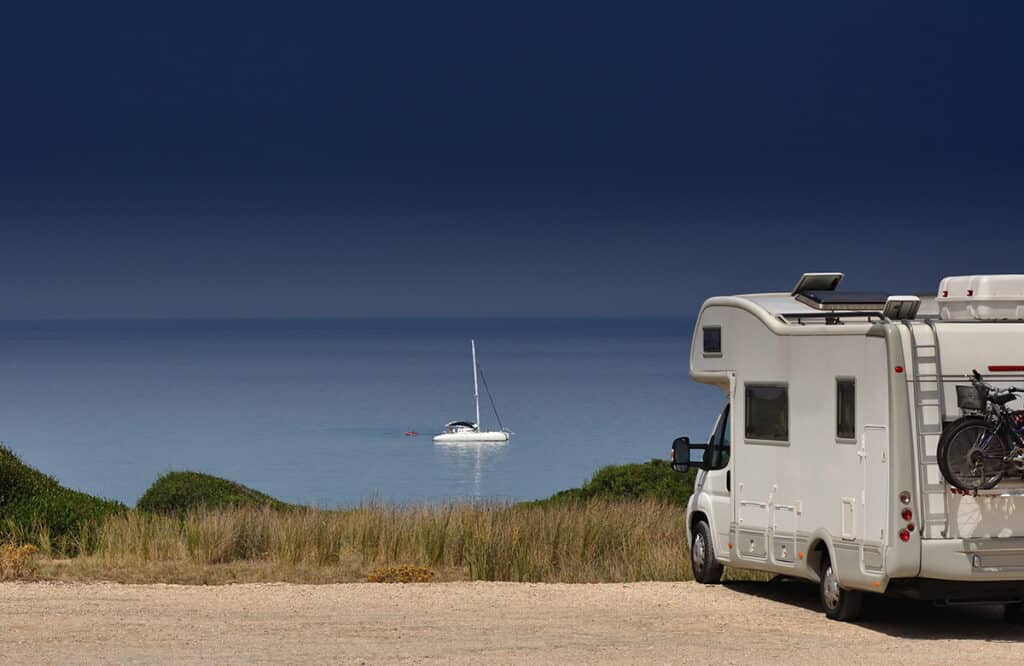
Understand your motorhome electrics
So many motorhome newbies don’t realise that the 230v electrical sockets in their motorhome or camper won’t work unless you are plugged into mains electric, either at home or at a campsite. And even then, you probably won’t be able to use your electric kettle, toaster, microwave AND hairdryer all at the same time (or you’ll overload the campsite electrics, trip the switch and have to go searching for the fuse box in your pajamas!)
We highly recommend getting a gas kettle (assuming you have a gas hob), so that you can make a brew whilst not connected (such as parked up in a pretty parking spot for lunch or if you choose to go motorhome wild camping.)
Bonus motorhome tip: It’s a really good idea to have 2 gas bottles, instead of just one. Not only does it give you more gas, but you then know when you’re running low, so you can exchange or refill as needed. Nothing worse than being caught short of gas!! 🙂
Don’t forget your motorhome essentials
I know, I know, I KNOW. You’ve got a new motorhome and it’s just.so.easy to buy things for it. Cushions and bedding and cutlery and crockery and… stuff.
But, there are some essential gear which every motorhome needs. Things which you’ll really regret not packing, like a hose for your fresh water and an electricity cable. You can grab a free checklist to help you remember it all here:
Check your motorhome leisure battery
One of the biggest issues new motorhome owners have (or those who winterised their motorhome for storage and haven’t used it for a while) is that the leisure battery dies. There are several reasons this could happen (you can read more about how to care for a motorhome leisure battery here) but, before you leave, make sure to test it and replace it if necessary.
On that topic, make sure you do regular motorhome habitation checks (either yourself or at a garage) to make sure everything stays ok and safe.
Do your departure checks and plan your route before you leave
It’s very easy to get caught up in the excitement of going on an adventure. However, take a few moments before you leave to make sure you’ve done all your motorhome departure and pre-trip checks, and to make sure your route is planned into the sat nav.
Things which are easily missed include:
- Locking fridge
- Checking all overhead lockers/ wardrobes/ cupboards are closed and clicked shut
- Turning off the gas
- Closing the glass lid on the hob
- Unplugging the electric cable (your motorhome might have a warning buzzer for that!)
- Checking the exterior steps are away
- Making sure your external motorhome storage box is closed and locked
- Closing and locking windows and hatches
- Packing away TV
- Having road trip snacks and a hot drink to hand
Be sure to shut all windows and hatches before driving off
Oh, we’ve all done this! You’re merrily driving along, thinking how FRIENDLY everyone is today, because they’re all waving… until eventually you realise you’ve for a hatch flapping around. Or you’ve left the motorhome TV satellite up, or a window is banging in the back. Working through the pre-trip checklist will help stop all that.
Also, motorhome windows are notoriously vulnerable. Improving them is really quick and simple- see our review of the Lock M Out motorhome window locks.
Bonus motorhome tip for beginners- Practice putting your awning up
If you have an awning on your motorhome or camper (and if you’re heading to Europe, we highly recommend one), then practising putting it up BEFORE you get to a campsite is a really good idea. It can be a little complicated the first time or two, so familiarising yourself with the process will help enormously.
Motorhoming tips and tricks for beginners VIDEO
Watch the video of some more newbie tips for motorhoming and campervanning:
Want to see more motorhome travel videos and tips for the UK and Europe? Subscribe to our Youtube Channel here- new videos released weekly
Motorhome Travel Tips and Tricks
Before you head off on a motorhome road trip, here are some tips and tricks to help you make the most of your time on the road.
Know your motorhome dimensions (and get a proper sat-nav!)
Until you do it yourself, it’s hard to explain to people what driving a motorhome is like. You’re suddenly in charge of a vehicle which is higher, wider and longer than you’re used to. You’ll be more aware of the road than you’ve ever been before.
You’re also a LOT harder to turn around.
Trust me, as someone who’s sat in a vehicle whilst we had to reverse for 2 miles BACKWARDS up a hill, whilst pushing a trailer (because we were towing our motorbikes)… the motorhome reversing camera was a godsend!
You do NOT want to get yourself stuck somewhere like a narrow road (this is while we were motorhoming in Wales, in case you’re wondering!)
The best way to avoid this drama is to invest in a dedicated motorhome sat-nav system: one that you can put your vehicle dimensions in and it will plan a route for you which avoids low bridges, narrow roads and weak crossings. You can even set it up to avoid toll roads or ferry crossings (good luck doing THAT if you’re going motorhoming in Norway!!)
Another useful motorhome tip: You’ll find the slow lane on motorways is often wider. If you’re nervous, stick to that one.
Be aware of speed restrictions
If your motorhome is over 3.5 tonnes, (or, technically, if the max unladen weight is 3.05 tonnes) you’ll find you have to obey different speed limits in many countries around Europe, including the UK, where you can only drive at 50mph on single carriageways and 60mph on dual carriageways (instead of the national speed limit). And if you’re towing, you can only do 60mph on a motorway, regardless of weight.
Bonus motorhome tip for beginners: be aware of low-overhanging trees when you’re driving! Those suckers sneak up on you…

Invest in wing-mirror protectors
These are one of the most useful bits of kit we’ve ever bought. Of course, no one sets out to clip their wing-mirror against a wall (or have another vehicle clip them!), but it does happen. Be careful when you purchase them, there are versions for long and short arms (the motorhome, not you!), so be sure to get the correct ones.

Another option is to paint your wing-mirrors bright yellow or pink, or put a reflective stripe down them to catch driver’s eyes.
Try not to arrive in the dark
Whether you’re heading for a new campsite, or heading home, arriving after dark just makes everything harder. Don’t forget, many motorhome campsites shut after a certain time (for security reasons), so if you arrive too late you might not be allowed in until the next morning.
Bonus motorhome tip for beginners: If you DO find yourself in the dark, a decent head-torch is invaluable, leaving your hands free to do all the jobs you need to do. And remember our tip from earlier, about learning how to turn the lights on in the dark?!
Motorhome tips and tricks for the campsite
There are plenty of tips and tricks for staying on a campsite. We share them all in our post about your first motorhome trip. But a couple of them include:
- Have your motorhome club cards or details to hand
- Fill up with water before you get settled on your pitch
- Drive forwards onto levelling chocks instead of trying to reverse onto them
- If you can, use hand signals instead of shouting at each other!
- For your first night, have an easy dinner ready to go. Make it simple for yourself.
Don’t forget to fill out your motorhome logbook with all the details of your trip!
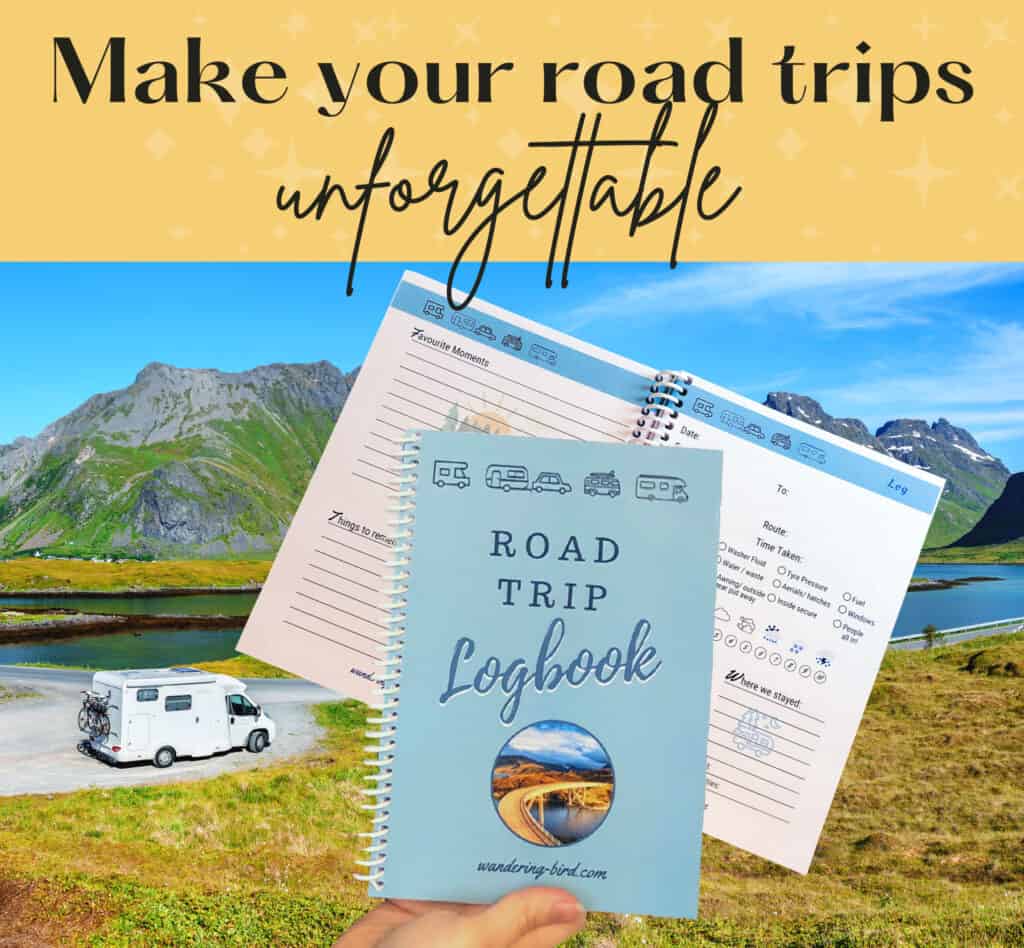
Be aware of your resources (fuel, gas & water)
One of the things we love most about vanlife is how frugal we are with precious resources, like freshwater and gas. We’re much more aware of how much we use in the motorhome than we are in a house.
However, it’s important to remember to fill up/ replace those resources as often as possible, especially if you’re travelling into remote areas, like on the North Coast 500 route in Scotland. In places like that, there are very few fuel stations. You’ll also struggle to get fresh water or empty waste out of season- many of the motorhome campsites on the NC500 close for winter. When you do find somewhere, make use of it.
If you have refillable gas bottles in your motorhome, you might find it harder to find stations in the UK than in Europe, but they are around. Be sure to fill up as often as possible.
Bonus motorhome tip: You’ll need hose attachments for Europe. We’ve found 1/2″ (21mm) and 3/4″ (26mm) connectors like this work at the majority of places. The trick is remembering to take them off the tap when you’re finished…
Use Google Maps
We are big fans of Google maps to help us plan a trip. Although we use the sat-nav for day-to-day navigation, we use Google maps to plan our road trips to help us discover and remember places we want to visit, and plan an itinerary around them all which makes sense.
You can create collections with Google Maps, so you can see all the points of interest in one area, and you can use that to help you decide where to visit that day.
But don’t over-plan your motorhome holiday. Life on the road is better when you can relax, and go with the flow. Sure, make plans to see places but also allow time to do things you hadn’t planned, like explore, play games or just sit by the fire and relax.
Have adequate safety gear
We lived on boats for 15 years and have always been strict about safety. We have fire detection and CO2 detection units in our van, plus an extinguisher and a fire blanket. Admittedly, when we did have a fire in our motorhome (fuse box shorted), it was the middle of the day and we smelt it before any alarms went off, but that doesn’t make it any less important.
Also, remember that most motorhomes no longer have a spare wheel. This is to save weight (and costs!) Instead, you’ll possibly have a tyre repair kit. This works by ‘squirting’ (technical term) the solution into the tyre and then reinflating it using a compressor. You can then drive this repaired tyre to the nearest garage for a permanent fix.
It saves weight, but if you have a large hole or rip in the sidewall, no amount of solution will fix that- so make sure your motorhome breakdown cover is in place- just in case!
Be aware of wet grass pitches
Ever driven onto a wet field in a heavy vehicle? If not, I sincerely hope it stays that way! Remember that a motorhome or even a campervan is heavier than a car, and that much weight on a soft, wet, soon to be muddy field is only going to result in you getting stuck. That’s why mud mats like these are so useful!
Stop rattles
There is NOTHING worse than listening to a motorhome full of rattles. Seriously, it drives me nuts. Sure, you can turn the radio up and ignore it, but there are ways to stop rattles in your motorhome. It basically involves a lot of tea towels and non-slip matting. You’re welcome.
Bonus motorhome tips and tricks: You need a lot less STUFF than you think you do. If you haven’t used something for a few trips, remove it and free up some space and payload (unless it’s safety gear!)
Motorhome tips for beginners- life on the road
Stop the smells
If you’re a complete newbie to motorhomes, you might not know that the more you use your van, the more odours you’ll start to experience. Bits of food will get stuck in the grey waste pipe and the toilet… well, let’s just say you should do everything you can to stop smells.
We use a product called Solbio organic toilet fluid, which is natural and doesn’t contain harmful chemicals. It’s also safe to be disposed of in septic tanks or fosse, meaning we have more options to dispose of our toilet responsibly.
You can also use a squirt down your sinks to clear out the pipes and your grey waste tanks- it will help keep your motorhome bathroom and toilet smelling fresh.
If you wish, you can also get the pink spray or liquid to add to your motorhome toilet flush to keep things smelly rosy, but we just use Solbio now.
Also, remember to close your toilet after each use. It helps stops smells or spills while driving!
Bonus tip: If you decide to leave muddy shoes outside, don’t forget about them before you drive off!!!!
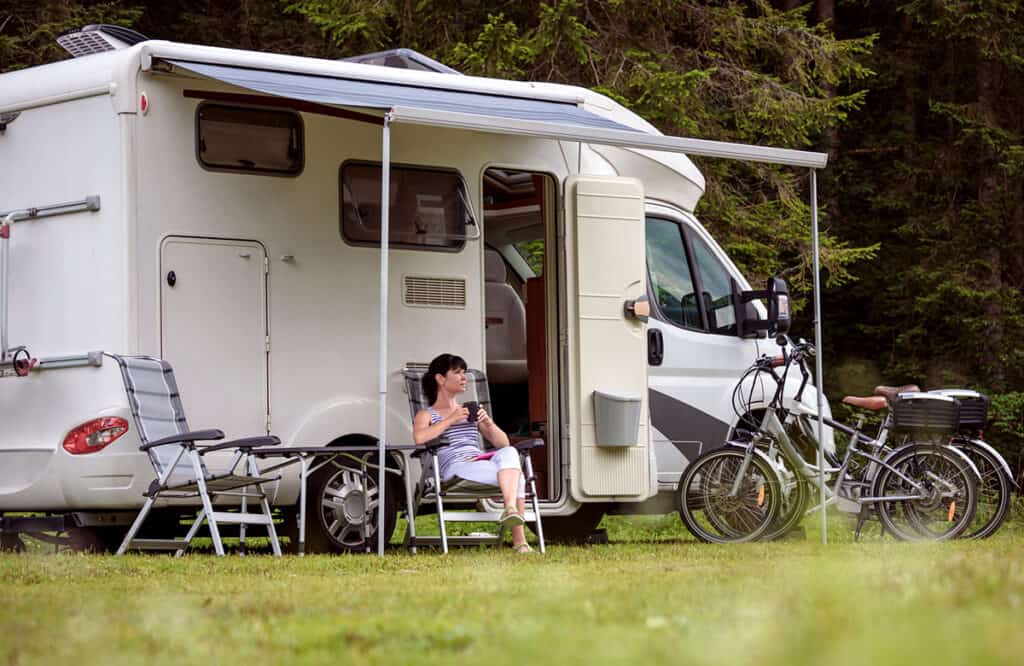
Don’t travel with valuables
We highly recommend not being valuables such as jewellery with you on your trip. The less you have to worry about, the better. If you are overseas, make sure to always carry your passport and wallet with you, instead of leaving it in the van.
For other valuables, such as laptops and iPads, try to find a hiding place not easily reached. The longer it takes for a thief to find, the less likely they are to stick around.
Bonus motorhome tip for beginners: There are hidden safe devices like secret tins, or those which lock with a code and you can click to a secure part of your van. They are well worth getting, especially for jewellery. See them here
Consider how to reach places without your motorhome
On our first trip to Scotland, we made the… unfortunate decision to drive into Edinburgh. Yep, in a motorhome. With a trailer. To say it was a mistake would be an understatement. What we should have done is park up outside somewhere safe and either ridden our bikes in or taken public transport.
We choose to tow motorbikes with us because we love exploring by bike, but they’re also a great way of getting around if we’re parked up at a campsite. Many people choose to carry pushbikes for the same reason, as well as getting some exercise.
If you don’t want to do this, or don’t have space in your payload, then public transport is your friend. Most campsites have a bus stop or train station somewhere near, or you can call a taxi if there’s no other choice.
Consider your motorhome security
It’s not nice to think about, but motorhomes are popular targets with thieves, both at home and on the road. It’s important to make your van look as difficult to steal as possible, so that they will (hopefully!) go on to easier options.
We recommend devices both to stop your vehicle being broken into (like additional motorhome hab door locks), and also devices to stop it being stolen, like steering or pedal locks.
Motorhome Tips and Tricks: The best motorhome security devices for at home and while travelling
Motorhome tips and tricks for Europe
Don’t let being a motorhome beginner put you off planning a trip to Europe. We headed to Europe with our motorhome after just 14 days experience. Sure, we made mistakes, but going and messing up is better than not going at all. Here are some motorhome tips and tricks for Europe travel (Europe Motorhoming for Dummies, if you will! ?)
Bring everything you need
Unlike the UK, most countries in Europe have strict rules regarding certain kit you need to carry with you. This includes things like:
- GB sticker on the back of your motorhome
- Warning Triangle
- Hi-visibility jacket for each person
- Headlight deflectors for UK-based vehicles
- Visibility sticker if your vehicle is over 3.5 tonnes.
- First aid kit – compulsory in France and Germany.
- Spare bulbs for all lights in the vehicle
Whilst we’re on the subject; no- you do NOT need a breathalyser for France. But you might need a blind spot warning sticker!
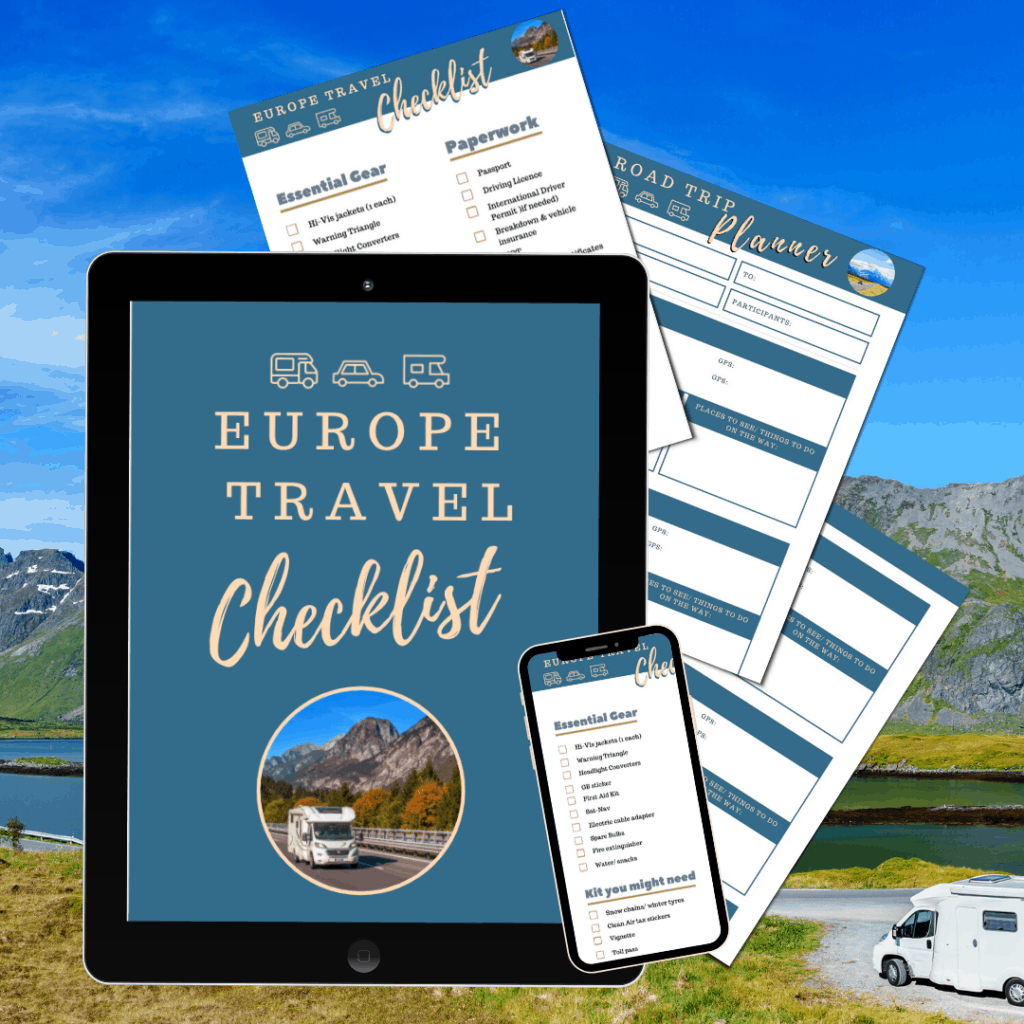
Want to head to Europe with your motorhome?
Grab your FREE (printable) checklist and discover 25 things you NEED to take with you when you travel in Europe. Make your life easier today.
Be prepared for emergencies and keep documents accessible
You also need to carry some paperwork with you, which includes:
- Passport (or identity card)
- Driving licence (check it is in date!)
- Motorhome Insurance documents- check you are covered for driving in Europe – Breakdown cover
- Vehicle V5 logbook (which must show your correct address)
- Vehicle must be legally taxed and MOT’d
- Trailer certification
- Green card (get from your vehicle insurer)
- International Driving Permit if required
- Personal travel insurance
Make sure you keep these papers somewhere easily accessible so that you can reach them easily if required. We highly recommend carrying some cash too, at least 100€, in case you get fined (they can request payment in cash, or escort you to the nearest cash machine.)
Bonus motorhome tip: be sure you have a European accident form in case of a road traffic accident while travelling. This post tells you everything you need to do in an accident.
Driving on the ‘wrong’ side of the road
I promise, motorhoming in Europe and driving on the other side of the road is not as difficult as it might seem before you do it.
It’s important to remember that the road system is set up to be on that side of the road, so exits/ entrances naturally curve the way you should go, as do roundabouts (which also have helpful arrows.) Honestly, it will feel easy after about 20 minutes. If you are heading to Europe, here’s what you need to know about driving in Europe after BREXIT.
Getting gas and water
If you don’t plan to use campsites every night, it’s important to know how to find freshwater, get gas and dispose of your waste hygienically. Europe is a lot easier to do this in than the UK is- there are plenty of waste disposal points at motorway services, along with a freshwater tap available to campers.
With LPG, don’t make the mistake we did and assume a European gas bottle will fit onto your UK system- the connections are completely different. You’ll either need to buy and bring European pigtails (the hose connections) with you or, if you’re planning to spend a lot of time in Europe, invest in a refillable gas system, so you can fill up with LPG at hundreds of locations across Europe.
More motorhome tips: How to get gas in Europe with a motorhome/ camper
Learn how to find places to stay
In Europe, there are (generally speaking) three categories of places you can stay overnight with a motorhome:
- campsites
- approved overnight parking spots/ aires
- off-grid camping
Motorhome Campsites
Campsites in Europe range from huge complexes with swimming pools, restaurants, kids clubs and entertainment. Others are cheaper, with less facilities, but do allow you somewhere safe to park up at night. The quality and cost will vary massively from country to country.
If you’re travelling out of high season and are planning to use campsites, we highly recommend buying an ACSI CampingCard membership to save money on your overnight camping.
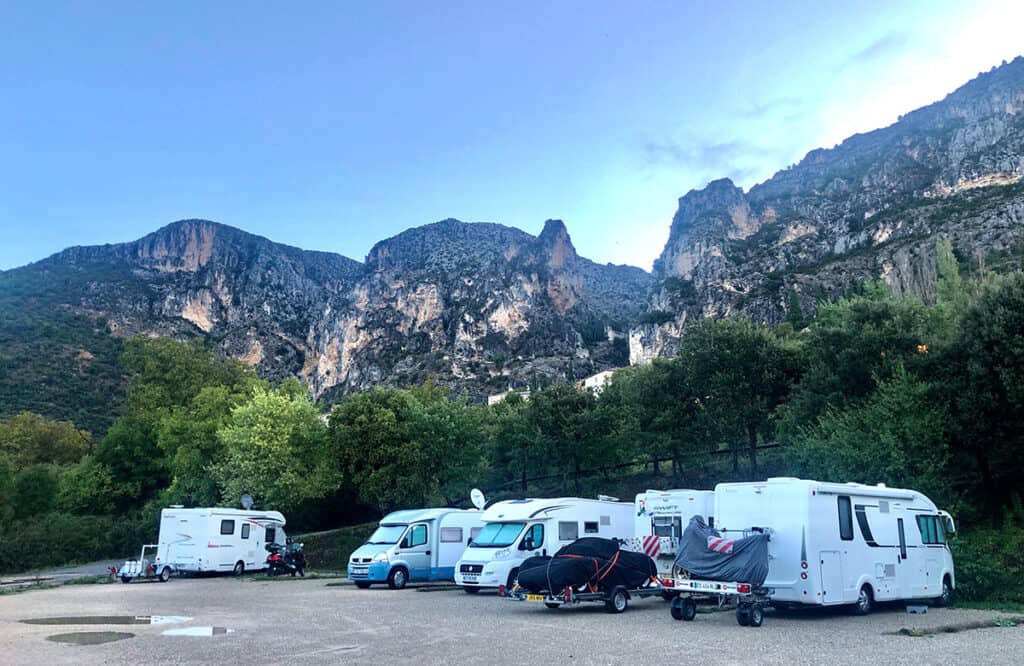
Motorhome Aires in Europe
An Aire is an approved motorhome and campervan overnight parking place. These places are found all over Europe and are approved places where you can stay with your motorhome or camper (not a caravan, sadly) for a limited amount of time (the limit will be signposted).
They are often paid, although you will find some in more remote areas which are free to use overnight. Many of them have motorhome service points- often for a small additional fee.
You can find the locations of these places from online guides or books. Just remember that information can go out of date quickly in a printed book, which is why we prefer to use an online guide when we’re looking for Aires in France and Europe.
Best motorhome tips and tricks: Learn how to find FREE overnight motorhome parking and stopovers
Wild camping with a motorhome
Wild camping (staying off-grid) is much more tolerated in most of Europe than it is in the UK. Admittedly, some places are easier than other- Norway welcomes it with open arms, whereas if you now go to Portugal with your camper, you’ll find wild camping is more complicated.
Be aware of National Park rules- most have strict bans on overnight parking in them and you could be fined if you break the rules.
Motorhome wild camping guides for the UK & Europe
For information on how to find good wild camping places, WHAT to do when you’re there and how to stay safe, check out our step-by-step guide for motorhome wild camping in the UK and Europe, complete with database of 250+ overnight spots we’ve stayed with our motorhome.
Don’t forget to grab your free wild camping checklist here
Research the rules for the country
Which leads me to my next point- make sure you research the rules of the country you are visiting. Don’t make the mistake of thinking all countries in Europe are the same. You need to research things like:
- What are the speed limits and restrictions?
- Are there tolls or do you need a vignette (like you do if you go campervanning in Switzerland)
- What documents or other equipment do you need?
- Rules for towing or using your travel drone
Extra motorhome tip for beginners to Europe: Research the rules for tolls/ vignettes here
We hope you found those motorhome tips for beginners (plus bonus motorhome tips and tricks) useful! If you have any more, feel free to drop them in the comments below.
Want more tips for motorhoming?
Here are some more ideas you might find useful:
- Essential Motorhome accessories every van should have
- Best Sat-nav for motorhomes or campervans
- Motorhome Security– tips for at home and on the road
- How to get Internet & wifi in a motorhome
- Europe- essential gear for travelling to Europe
- Best gift ideas for motorhome and campervan owners
Want FREE checklists, eBooks and additional tips to help? Visit our resource page
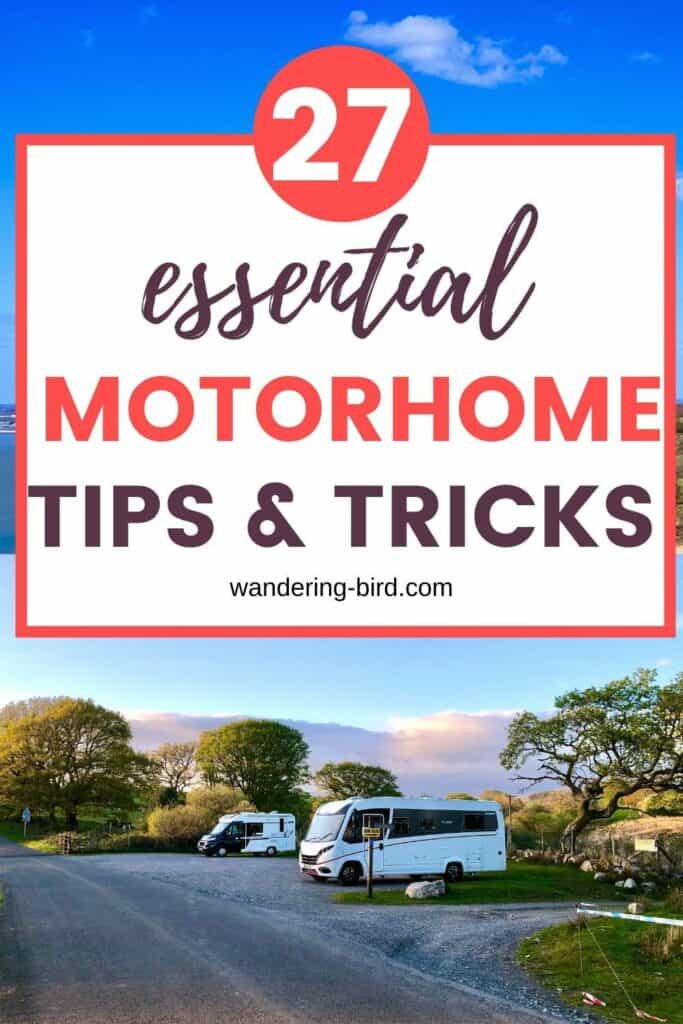
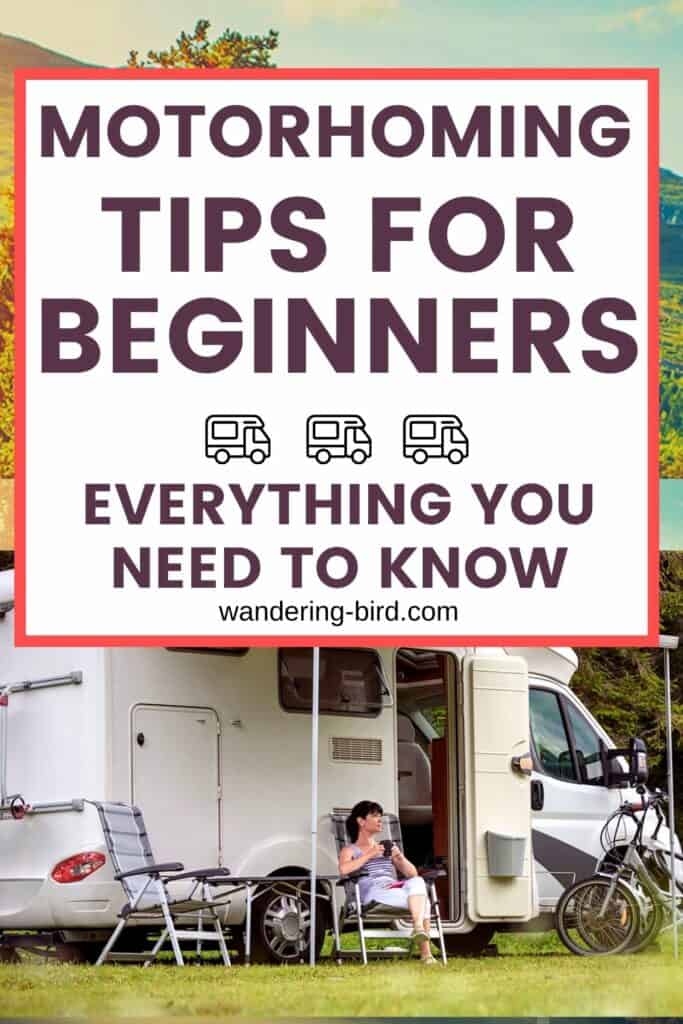

Kat never planned to buy a motorhome. She also never planned to quit her job as an air traffic controller, go touring around Europe in said motorhome, start one of the UK’s largest motorhome travel websites… or get a cocker spaniel.
Find out how she went from stuck in the rat race to being a digital nomad and inspiring thousands of people to have their own epic adventures here.
If you’d like to connect with Kat, send her an email or follow her adventures on social media.
Last update on 2024-04-27 / Affiliate links / Images from Amazon Product Advertising API
